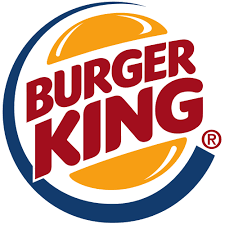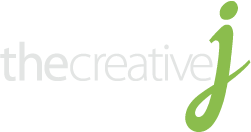The Power of Promotional Products
PPAI, the non-profit trade organization for the promotional products industry, has just released their latest research on the power of promotional products. The findings reinforce past studies — consumers like receiving promotional items, they tend to remember the company that gave them out, and they tend to hold on to the item, creating multiple impressions of the product or brand.
The study also shows that promotional products advertising has a 15-50% higher recall rate than tv, print and online advertising — a great bang for the buck.
Some quick facts:
• 83% of consumers surveyed like receiving promotional items
• 48% would like to receive them more often
• 69% generally will keep the item if it is useful
• 36% generally will give it to someone else if they don’t have a use for it, expanding it’s exposure
• 35% generally keep the product if they like the advertiser
• Decreases in advertising dollars are the least for promotional products as compared to other mediums
• A significantly more positive impact on brand image is projected by promotional products than other mediums
What Are Those Extra Charges?
On most orders of promotional products, you’ll see some charges in addition to the item cost, which you may have not been expecting. Depending on the imprinting method, you may encounter screen charges, set up charges, die charges, plate charges, PMS match charges and running charges. Why these additional charges? Let me try to explain:
Set Up Charges: Most suppliers charge this per location, per color, per size. This covers the cost for the supplier to set up their equipment, load the inks and plates or screens, and get the order ready to run. It may also include the cost of plates or screens. If a supplier doesn’t charge these, it simply means they have rolled that cost into the price of the item.
Screen, Plate or Die Charges: These are charges for the silkscreens, plates or dies used to create the imprinting material from the supplied artwork. These materials are then used on the printing equipment to transfer the imprint to the item. Some suppliers include these charges in the Set Up Charge. Since for each color there needs to be a separate screen, plate or die, you are charged per color for these.
PMS Match Charges: Most suppliers will have a list of stock ink colors they keep on hand or have preloaded in their imprinting equipment. If you want your imprint color to match the PMS color of your logo as close as possible, then most suppliers will charge the PMS Match fee. This covers the extra cost of exact PMS inks, and also the labor to clean the printing equipment, load it with the specific color, and to clean it again to reload it with the stock color.
Running Charges: The majority of items are priced with a one color imprint included in the item price. If you decide to imprint in multiple colors, or in multiple locations, then running charges apply. These cover the cost to run the items through the printing equipment multiple times – once for each color and each location. Usually the only time you won’t have running charges is if the item is being digital printed. When printed digitally, all colors are laid down on the item at one time.
Less Than Minimum Charge: If you want to order below the minimum quantity listed for the item, most suppliers will allow you to order 1/2 of the listed minimum…for an additional charge. This charge covers the portion of the set up they have already included in the item price and have allowed for with the minimum quantity listed.
Proof Charges: To make sure your imprint is going be positioned correctly, sized right and all the elements are there, the suppliers send an email proof, usually showing the imprint positioned on the item. (There are some that just haven’t been able to figure this part out, but we’re working on them!) The proof charge covers their cost of the additional paperwork and delays in the production process to prepare the proof. Now, it is always your option to forgo the proofing process, but an option we strongly oppose. There are times there might not be time due to a tight deadline, but whenever possible, it’s best to have a proof sent to make sure everything is right.
These are the most common charges that may show up on your order, depending on the items, imprinting method, and colors. When you work with The Creative J, we will always send you a confirmation showing all your charges BEFORE we place the order. Once you approve the confirmation and charges, then your order is placed and the process should be clear and simple for you to follow.
Why are memory prices increasing?
Seems memory prices keep increasing lately. According to the AppleInsider, October 9 edition, the demand for flash memory has outstripped the supply due to the popularity of devices like the iPhone and iPod Touch.
Demand in the third quarter exceeded supply by 1.3 percent, and expected to grow to a 3.3 percent deficit during the upcoming holiday season.
Demand is expected to grow 81 percent in 2010 due to the growth of smartphone sales. It’s expected for manufacturers to meet that demand in the first half of the year, but by the end of 2010, demand is expected to outstrip supply again.
We’ve noticed here the past year that memory prices change on a weekly basis with most of our suppliers. Now with this announcement, it’s important to keep in mind that the quote you get on Wednesday will most likely change Friday afternoon.
The Creative J will always do our best to search out the best pricing for your flash memory needs. However, as memory becomes more and more in demand and supplies lessen, our options may not be as plentiful as earlier in the year.
My First Memorable Promo Product
 A family from Florida moved into the vacant unit of our duplex. They were exotic to me because they came from a land filled with swamps and alligators. Their daughters wowed us with stories of their past life in Florida. I must have been 8 or 9.
A family from Florida moved into the vacant unit of our duplex. They were exotic to me because they came from a land filled with swamps and alligators. Their daughters wowed us with stories of their past life in Florida. I must have been 8 or 9.
Their dad had a job doing something nobody else’s daddy did. He was working for a hamburger place that was going to be everywhere. It was 1968 or 1969 and we just didn’t have a clue yet.
One special sunny day, Mr. T (I wish I could disclose his name) took us to a field at 49th and “L” Street. I was really tickled because the field was adjacent to a best friend’s yard. Mr. T was showing my father, who was also in retail, where the construction was to begin on a restaurant he was involved with. I remember standing there, listening and wondering what the heck they were jabbering about. Then Mr. T reached into his pocket and pulled out a round wooden object. He asked me and my sister “Did you get around to it?” Of course, I didn’t know how to answer him so I asked, “What do you mean?” He repeated himself, carefully hiding the object in his hand “Did you get around to it?” I was not able to answer him. He then took my hand and placed the wooden coin in it. On it were the words “A ROUND TUIT.” On the flip side was a “coupon” stating that it was good for ONE FREE WHOPPER.
What in the world was a WHOPPER? A couple of months later, the first location opened at 90th & Center. My family made the “Grand Opening”, armed with our ROUND TUITS. I feel lucky to have witnessed the birth of a fast food giant in Omaha… I hope you have guessed by now that it was BURGER KING!
Mr. T and his family later moved from our duplex into something palatial and then to places beyond and out of our lives.
A few weeks ago, on a sunny Saturday afternoon, I drove through the Burger King 49th and “L” and this memory came alive within me and it made me smile. What a clever use of a promo product. I don’t recall anything else in the past 50 years that I’ve seen that has rivaled it.


